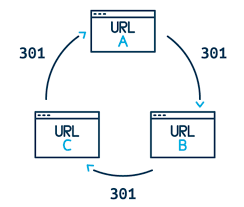
Whether it’s a complete redesign or CMS migration, simply handling a site from an SEO perspective can be a challenge. It gets even more complex for large, multi-page websites with lots of moving parts. Based on our experience working with clients on full redesigns, one of the most overlooked elements is image redirection.
While easy to ignore, images are just as vital as any other asset. Neglecting to redirect image URLs during migration can have a serious impact on both traffic and rankings, for example, especially if those image URLs are indexed or appear in Google Search Console under valuable queries.
URLs Are URLs

Just like text in the form of articles, posts or documents, images also exist in URL form. Many people do not know this. Images on a site could accumulate external links and could even boost traffic to the website when it shows up in image searches on search engines or media sites like Pinterest. However, during site migration, many businesses handpick seemingly relevant information from their old sites and leave important images behind. This article covers how to glean site information during migration and redirect old URLs. It also shows how to confirm if everything went where it was supposed to go. Image redirection is essential, and during redesign or migration, it could totally help you or your web designers avoid adverse effects.
Getting Image and Text Redirection Right
When you switch or change URLs, you absolutely have to get redirection done correctly (the first time, if you can). This requires 301 redirecting previous URLs to the new one. This is not the same as directing previous URLs to the new homepage or other less important ones. Doing this instead will only make search engines flag them off as soft 404s, and eventually, take them off the index. Terrible, if you ask me.
If you are thinking of abandoning the image redirection process altogether, keep reading this post. Skipping image redirection produces error messages on the new site and a signal loss on the old one after migration. Even if you add new images or replace them with a fresh embedded image on the new site, they may never outrank the old ones (indexed or not).
Also, don’t forget to enable HTTPS during the migration process. Redirects from HTTP to HTTPS are essential not just for SEO, but also for ensuring all image URLs and links are secure and properly recognized by modern browsers.
Overall, you will lose important data, images, ranks, and links. Most of the time, you will have to individually link the old image URL to the new image URL. Otherwise, a code script can be made to run the whole at a time. If handling the URLs individually is too much work for you, talk to a webmaster about making a tailored resolution for bulk redirection. Chip in a lookup table for reference.
All in all, do your best to prevent your site pictures from turning into 404 error messages. There are tons of ways to successfully migrate image URLs when you change URLs, so you can preserve ranking and site traffic.
Redirecting Images During a Redesign or CMS Migration

Usually, we take a lot of time to gather pertinent info on a site’s migration requirements so that our clients will be well aware of the number and content of URLs waiting to be redirected. This usually includes high ranking URLs and those with the most traffic. There are a couple of ways to gather data like this when it comes to image URLs. Here are our favorite ones: Site Crawling Crawling extracts all site images. Some of the popular crawling tools out there are Screaming Frog and DeepCrawl. After crawling, you can find the end report in the images tab on Screaming Frog. For DeepCrawl, the result is listed in the ‘’All Images” section of the report. For both tools, the report can be exported for auditing, so you are sure your redirection plan is solid. Inbound Links Analysis To find images that have built links, some of the analysis tools we use are ahrefs and Majestic. After exporting with any of these, we use Microsoft Excel to screen images in all formats and extensions to be sure they redirected correctly. Search Analytics Report on Google Search Console (GSC) In the Search Analytics Report on GSC, the ‘Pages’ section will show the stats for all high ranking URLs on your site. Filter these results to see what images from your website come up in search engines. Export the URLs for these images and make sure that the export contains the actual images included in the URLs. Random tip: On GSC, the ‘Queries’ section will show you the exact keywords linked to the image URLs with the most traffic. This way, you know what images are important to redirect so you don’t lose search traffic or ranking on your new site.
Collect and Dedupe: From creating your site so far, you will have a truckload of images and data. When you get to this stage, make a list of all URLs in an Excel spreadsheet and dedupe it. This sheet will give you a list of images and their URLs to audit.
Auditing Image Redirects
The importance of redirection planning and auditing before your new site is up and running cannot be overemphasized. Get your audit done before you push the migration button. Check one-by-one (if you can) to see that your entire image URLs are redirected. Conversely, you can use tools like DeepCrawl to make your redirection plan flawless.
Remember Your Redirect Chains
Have you redirected your URL 301? Great. Checked where it leads? No? Redirects are supposed to go to 200. Checking your redirect chains to see if they went someplace else (like 404s and 500s) is important. If your redirects don’t go to 200s, that means you had a faulty migration. This can lead to loss of ranks and site traffic. Use Screaming Frog or DeepCrawl to make sure you didn’t leave out or fix any broken redirects.
Keep an Eye on GSC for Image Traffic
When your new site is up and running, image traffic needs to be observed on GSC using the Search Analytics feature. Filter the results to show only images and click to see the stats on image searches. If you notice a decline after the site goes up, check to see that the redirection was done correctly.
Conclusion
Site migrations and page redesigns are complex, but forgetting to redirect images is a mistake we see far too often. If you want to preserve your ranking, retain search traffic, and keep your users from hitting 404s, take your image redirect strategy seriously.
Use tools to crawl, organize, and implement clean redirects. Don’t assume new image URLs will replace the old ones automatically in Google’s eyes. Handle it right — or talk to your developer to build a workflow that does. Redirected images, maintained ranking, and a happy browser experience? Now that’s a migration done right.






